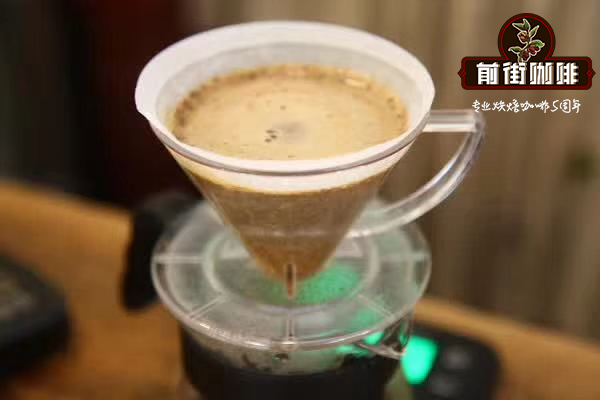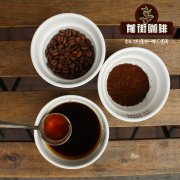Coffee production in Tanzania what kind of coffee does Tanzania produce? introduction to Tanzania coffee varieties.

Professional coffee knowledge exchange more coffee bean information please follow the coffee workshop (Wechat official account cafe_style)
According to the Tanzanian Coffee Council, coffee was first introduced to the area around Moshi at the foot of Mount Kilimanjaro in 1898. Today, the northern regions of Moshi and Arusha (at the bottom of the Meru Mountains) and the southern regions of Mbeye are still famous for producing some of the best products in the country. Although most coffee in Tanzania is produced by smallholder farmers (90 per cent of Philippe Jobin coffee produced around the world), there are many large estates in the north, owned and operated by European families and companies. These early 20th century colonial relics are so fascinating that before cars were introduced and highways were built between towns, many planters would fly from one farm to another because of the distance. Today, many of these large plantations provide accommodation and breakfast for tourists interested in learning about the coffee industry in Tanzania.
More common than large estates are small, individually owned coffee plantations, usually less than a hectare. Historically, small farmers have sent unprocessed coffee cherries to private collectors and then sold them to exporters for processing on their own land. If the farm is far from the nearest town, it is more common for small farmers to depilate, ferment, wash and make their own coffee at home, so that dry parchment can be stored and delivered to buyers at the next appropriate time. In general, buyers are more willing to buy cherries so that they can have better control over the washing process, as the quality of washing and drying may vary greatly among small farmers.
The bean size grading system used in Tanzania is very similar to that in Kenya. In Tanzania, "AA" is the largest size class, made up of beans with screen sizes 17 and 18. The global screen size refers to the size of the screen hole, in inches wide # / 64ths. "AB" is 15 AB, 15 screen is "C", 15 screen is "C", and "PB" is Little Bean. Even today, larger screens can lead to higher auction prices, and many international markets prefer coffee beans with large screens. We found that there is no absolute correlation between the size of beans and the quality of cups, which is why many of our products in Tanzania are AB and PB. For some reason, Peaberry coffee from Tanzania has become very popular over the years, at least in the United States.
Atlas recently partnered with our sister company Ibero (NKG East Africa) to purchase peaberry lots from three different AMCOS (Agricultural and Marketing Cooperation Associations) in the Mbeye region of southern Tanzania, which is one of the best products we have offered in Tanzania in the past decade.
In January 2018, the government made a dramatic and sudden reform of coffee regulation, which threw Tanzania's coffee industry into chaos. There will be four regional auctions in Moshi instead of once a week. Before these changes, private buyers and exporters could buy cherries and parchment, but the new rules stipulate that only cooperatives (called AMCOS: Association of Advertising Marketing Cooperatives) can buy cherries and parchment. Farmers are scrambling to organize themselves into AMCOS, some with central processing units (CPU / washing stations) and some engaged in farm / home-processed coffee.
During this period, five local banks across Tanzania failed, many private companies cancelled their export operations, and farmers and exporters were forced to make substantial adjustments to their operations in a very short period of time with little guidance. Things have stabilized a little, but time will tell whether the new regional auction system has improved, as auctions outside the Moshi are sporadic.
END
Important Notice :
前街咖啡 FrontStreet Coffee has moved to new addredd:
FrontStreet Coffee Address: 315,Donghua East Road,GuangZhou
Tel:020 38364473
- Prev

Uganda Coffee Cooperatives Uganda Ekende Coffee Cooperatives African Coffee Producing Countries
Professional coffee knowledge exchange More coffee bean information Please pay attention to Coffee Workshop (Weixin Official Accounts cafe_style) Our Ekende project in Uganda is to find a naturally processed East African coffee, which is a blend of jam, chocolate and heavy body. This flavor has become increasingly difficult to find from other sources, but after years of experimentation, we are in Uganda West.
- Next

How does Tanzanian coffee taste? Tanzanian coffee graded Tanzanian coffee source
Professional coffee knowledge exchange more coffee bean information please follow the coffee workshop (Wechat official account cafe_style) Iyela peaberry is from Iyela farmer group, the company was founded in 2011, due to changes in government regulations, joined Iloma AMCOS in 2018. There are 1870 central processing units (CPU / cleaning stations), serving 391 members.
Related
- Beginners will see the "Coffee pull flower" guide!
- What is the difference between ice blog purified milk and ordinary milk coffee?
- Why is the Philippines the largest producer of crops in Liberia?
- For coffee extraction, should the fine powder be retained?
- How does extracted espresso fill pressed powder? How much strength does it take to press the powder?
- How to make jasmine cold extract coffee? Is the jasmine + latte good?
- Will this little toy really make the coffee taste better? How does Lily Drip affect coffee extraction?
- Will the action of slapping the filter cup also affect coffee extraction?
- What's the difference between powder-to-water ratio and powder-to-liquid ratio?
- What is the Ethiopian local species? What does it have to do with Heirloom native species?

